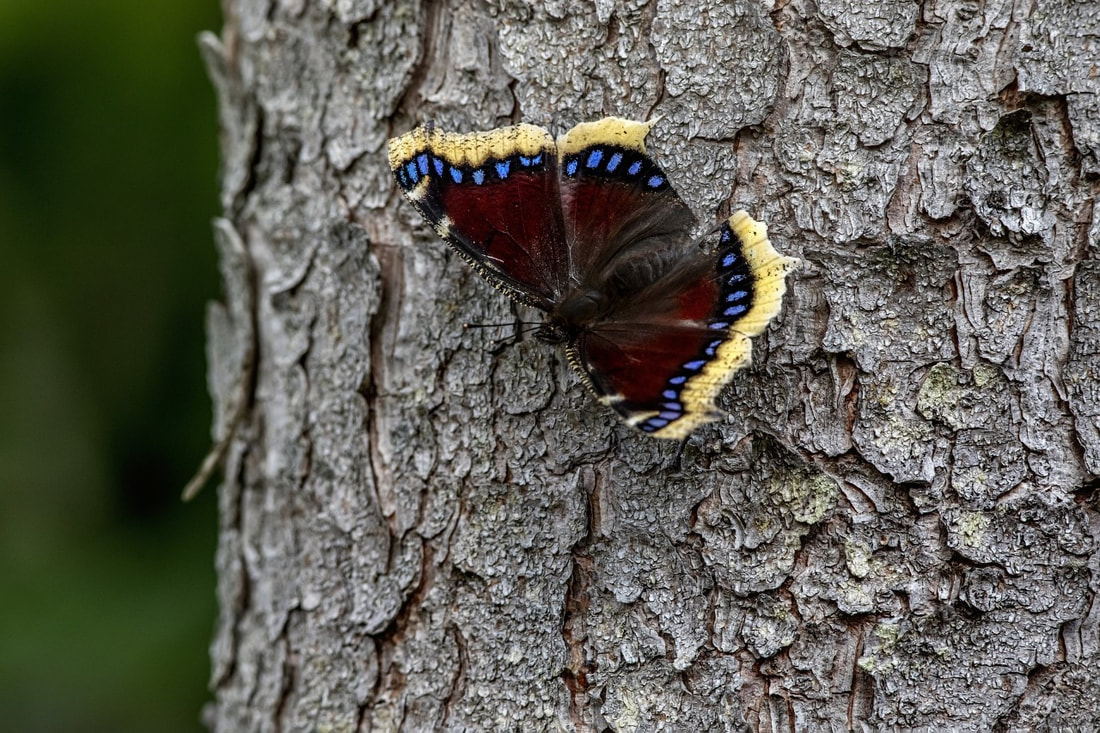Many people are familiar with the monarch butterfly's winter strategy--migration to Mexico. But most insect pollinators don’t migrate. Instead, many of the butterflies and bees of the SBG are still here with us throughout the coldest months in a variety of life stages--as an egg, larva, pupa, or adult. They survive by entering diapause, a period of suspended development that allows them to safely wait out the freezing weather.
It's hard to believe on a frigid January day, but a few insects wait out the winter in the adult stage, safely tucked away into crevices. in between logs or underneath loose bark on trees. The mourning cloak butterfly (Nymphalis antiopa) spends the winter with us as an adult, so it often can be seen flying very early in spring, and occasionally even during warm spells in January or February. This butterfly is one of the longest-lived of all butterflies(11 months) and it has a very unusual and interesting life cycle!
Eggs are laid in early spring on the twigs of trees (favorited species include willow, elm and hackberry) and the little caterpillars feed on the leaves all together in a big web.
New adults emerge in June or July and feed for a few weeks. Then, during the hottest months of the summer, they will “estivate”, which is basically a summer diapause. They’ll tuck themselves away in a cool shady hideaway. When the weather cools down again in the fall, the adults will wake up and feed to get ready for winter. Then they’ll find a nice protected spot under tree bark to spend the winter.
The adult is well camouflaged, with underwings that mimic the texture of tree bark. Besides this excellent disguise, the mourning cloak has another winter strategy. It keeps from freezing by replacing the water in its body with antifreeze compounds (cryoprotectants) which supercool its bodily fluids and tissues. Its hairy body provides insulation, and its dark wings soak up the rays on sunny days.
When the weather finally warms up a little, that butterfly is going to feel hungry—but there aren’t usually many flowers blooming in February! What's a hungry butterfly to do? In the case of the mourning cloak, it will feed on tree sap, with oak sap being a particular favorite.
Author: Lisa Schneider
Photo: Erik Karits, Pixabay


 RSS Feed
RSS Feed